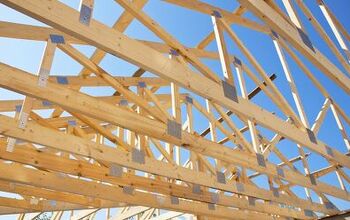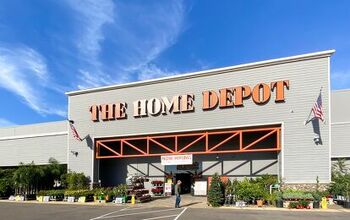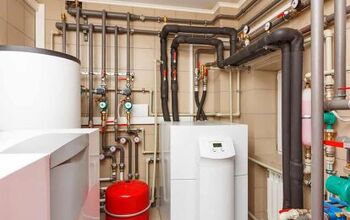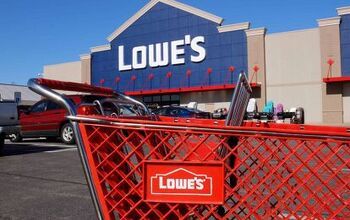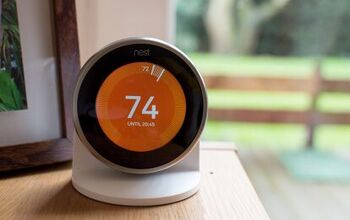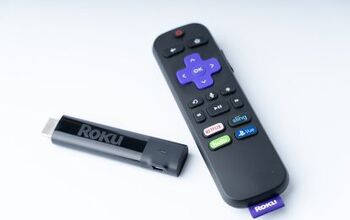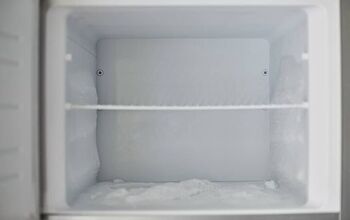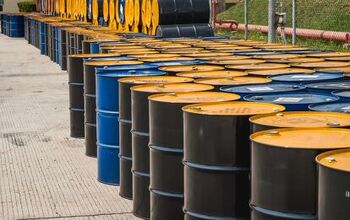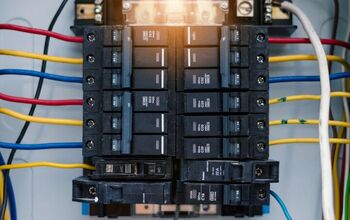Leaf Blower CFM Vs. MPH: Which Is More Important?

Cheaper isn’t always better, especially with regard to power tools. A higher-priced tool usually means better quality overall. And leaf blowers are no exception to this rule.
When deciding on the best leaf blower for your needs, there are many factors to consider. You want to look at things like horsepower, portability, and weight. You also want to look at speed and airflow, better known as MPH and CFM. But what do those letters actually mean, and how do they help determine the quality?
Cubic feet per minute (CFM) measures how much air flows through the leaf blower each minute. The higher the CFM the more air your leaf blower produces. This number determines how big an area can be cleared in any length of time. Miles per hour (MPH) determines the speed of the air flowing through the nozzle. The higher the MPH the faster the debris is moved.
Do You Need Lawn and Tree Maintenace Pros?
Get free, zero-commitment quotes from pro contractors near you.

Leaf Blower CFM
CFM stands for cubic feet per minute. This is a measurement that determines the volume of air blown through the nozzle in one minute. For example, a leaf blower with 349 CFM means that 349 cubic feet of debris are moved in one minute.
But why is that number important? Knowing the CFM allows the buyer to determine how big of an area they can clear in a period of time. The higher the CFM the more air that passes through and the more debris is moved. Generally speaking, the larger the mouth of the nozzle the more air will blow through, making the CFM higher.
Leaf Blower MPH
This is a concept we’re already familiar with. MPH, or miles per hour, determines the speed at which the air blows through the nozzle in one hour.
This number lets the user know how quickly and forcefully debris can be cleared from an area. The higher a leaf blower’s MPH the faster and more forcefully the debris will be moved.
How to Determine CFM and MPH
Usually, CFM and MPH are determined by the leaf blower’s engine. The larger and more powerful the motor the higher the CFM and MPH will be.
The CFM and MPH ratings are also regulated by the impeller blades. The impeller is like a fan inside the leaf blower that generates the airflow. Both CFM and MPH rely on the following features of the impeller blades: length, speed, and angle of rotation.
If the impeller has a high degree angle, a larger volume of air is produced, which makes the speed more difficult to maintain.
CFM vs. MPH: Which is More Important?
In truth, it depends on what you need out of your leaf blower. Do you want to move a small amount of leaves quickly? Or do you want to move a lot of leaves over a further distance? Each question determines which rating is more important to you.
It makes sense to consider CFM and MPH together when you’re trying to determine the force and strength of your blower. After all, you want an idea of how much debris you can move before you buy it.
When you combine the CFM and MHP ratings, it explains the strength of the blower. A high rating for both CFM and MPH would mean a powerful airflow overall.
However, combining these two ratings doesn’t give an accurate representation. CFM and MPH can end up affecting each other. Here’s why:
We know that it’s difficult to maintain speed (MPH) when large volumes of air (CFM) are produced. Alternately, if the air volume lessens, the air can blow at a higher and more forceful speed.
If a leaf blower has a high CFM, a larger pile of leaves can be moved, though not very far.
If a leaf blower has a high MPH, a smaller pile of leaves will be moved at a further distance.
What is a Good CFM for a Leaf Blower?
The three main types of leaf blowers are handheld, backpack, and walk-behind. Each type of leaf blower has its own range of CFM ratings. Again, it all depends on your personal preferences when it comes to how you want the yard cleared.
Handheld Leaf Blowers
These are the lightest and arguably the most commonly purchased leaf blowers. They are portable, easy to maneuver and don’t take up too much space. With speeds of over 190 MPH, a good CFM for a handheld blower is 350-600.
Breaking it down even further, handheld leaf blowers come in different models: corded, cordless, and gas-powered. Each of these models also has its own CFM ranges.
· Corded Leaf Blowers: 225 CFM at 60 MPH to 470 CFM at 270 MPH
· Cordless Leaf Blowers: 350 CFM at 120 MPH to 580 CFM at 168 MPH
· Gas-powered Leaf Blowers: Even though the power source is different, their CFM and MPH values are similar to other handheld models. This ensures the blowers remain the lightest weight possible.
Backpack Leaf Blowers
With these leaf blowers, you will typically see high CFM ratings. This is due to the fact that they are bigger and heavier with more powerful motors. While handheld leaf blowers are a popular choice, they aren’t as useful on a large property. A backpack blower is the way to go.
For these blowers, a good CFM rating is 580 CFM at 145 MPH to 632 CFM at 180 MPH.
Walk-Behind Leaf Blowers
These blowers are the biggest and most powerful and are typically used in a commercial environment. They can only be used in open spaces, which is why they are the least common among homeowners. The range of a good CFM rating for these blowers is from 1080 CMF at 200 MPH to 2600 CFM at 200 MPH.
Other Factors to Consider
Aside from CFM and MPH, there are other factors that play a part in how much work your leaf blower can do.
For every leaf blower, weight is a considerable factor. We know that the engine size helps determine the CFM and MPH ratings. The bigger the engine the more powerful it will be, which means the CFM and MPH are likely to be higher. But the leaf blower will also be heavier.
For gas leaf blowers, you need to take into account the engine’s horsepower, fuel capacity, and displacement or cubic capacity.
For cordless leaf blowers, you have to pay attention to the battery’s lifespan and voltage.
Manufacture Variances
As you use your blower, you may notice the CFM and MPH values differ slightly from what the manufacturers say. Manufacturers measure CFM and MPH values starting at the tip of the nozzle.
So, if your leaf blower has a 250 MPH rating, it means that the air coming directly out of the nozzle is going 250 MPH. Once it hits the outside, the air dissipates. So the air reaching the leaves is no longer going 250 MPH.
This is just something to keep in mind while browsing for blowers.
Related Questions
We’ve covered a lot of the basics in terms of a leaf blower’s CFM and MPH rating. But you may still have more questions. Below are some other things people wondered about leaf blowers and their CFM and MPH values.
How do you increase CFM on a leaf blower?The nozzle is the key to changing both the CFM and MPH on a leaf blower. If the nozzle is narrower, the MPH will increase because the air has less room to expand. So, it will blow with more force. However, this decreases the CFM.
If the nozzle is more open, the CFM will increase because the air will come out with more volume. However, this decreases the MPH.
What’s the highest CFM leaf blower?Below are the top 5 high CMF leaf blowers of 2021. (Just remember, a higher CFM typically means a lower MPH. You’ll move more leaves over a longer period of time.)
- Husqvarna 965877502 350BT 2- Cycle Gas Backpack Blower (692 CFM / 80 MPH)
- Craftsman B21525cc 2-cycle Handheld Gas Powered Leaf Blower (430 CFM / 200 MPH)
- Toro 51621 Ultra Plus Leaf Blower Vacuum (350-410 CFM / 250 MPH)
- WORX WG520 Turbine 600 Corded Electric Leaf Blower (320-600 CFM / 60-110 MPH)
- WORX WG584 40V Cordless Leaf Blower (470 CFM / 69, 80 or 90 MPH)
Because wet leaves are denser and more difficult to move, you need more air to do it. You need a CFM of at least 600 in order to move wet leaves or any other type of debris that is difficult to move.
Do You Need Lawn and Tree Maintenace Pros?
Get free, zero-commitment quotes from pro contractors near you.

Summing It Up
When choosing a leaf blower, you want to carefully consider its volume of airflow (CFM) as well as the speed of the airflow (MPH). Both ratings are important to take note of. But remember, these two ratings shouldn’t be combined as they work together and affect each other.
The faster the speed the smaller volume of air and vice versa. So, a high MPH means moving a small amount of leaves quickly. While a high CFM means moving more leaves over a longer period of time.
Other factors like the design of the impeller blade and the leaf blower’s weight factor into the CFM and MPH values. Each type of leaf blower—handheld, backpack, or walk-behind—has its own set of CFM and MPH ratings.

Brigid Levi is a wife, mother, and freelance writer who enjoys a good DIY project and creating beautiful spaces within her home. From cleaning and organization hacks to home decor ideas, she loves helping people in their quest to turn a house into a home. Her hobbies include pretending to be Joanna Gaines while updating her home with her husband and performing in local theater productions.
More by Brigid Levi













